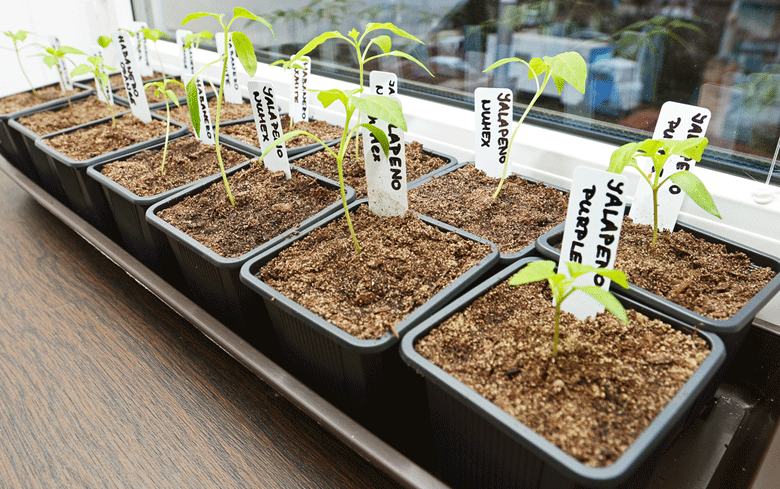
It starts at the beginning
To ensure optimal growth and a bountiful harvest , it is crucial to establish a solid foundation and follow proper cultivation practices right from the beginning. By providing your chilli plants with the ideal conditions and implementing effective strategies, you can maximize their growth rate and enhance their productivity. This comprehensive guide in a series of posts will walk you through the essential steps necessary to achieve accelerated growth and optimize the potential of your Chilli plants.
Embarking on your chilli growing journey requires a strong start, and it all begins with selecting the highest quality seeds available. Investing in seeds from reputable companies guarantees that you are working with healthy and viable genetic material. While these seeds may come at a slightly higher cost, it is a worthwhile investment when considering the time, effort, and resources you will dedicate to cultivating your Chilli plants.
worthwhile investment when considering the time, effort, and resources you will dedicate to cultivating your Chilli plants.
The germination stage is a critical milestone where the dormant seeds awaken and sprout into vibrant seedlings. Maintaining the appropriate germination temperature is vital for successful sprouting. Chilli seeds tend to germinate best within a temperature range of 26-32°C (79-90°F), with an optimal temperature of around 28°C (82°F). Creating a warm environment, such as using a seedling heat mat or placing the seeds in a consistently warm location, promotes faster and more uniform germination, setting a strong foundation for accelerated growth.
Once your Chilli seeds have successfully germinated, providing immediate access to light is essential. Adequate light exposure prevents the seedlings from becoming weak and leggy. Whether you opt for dedicated grow lights designed for optimal plant growth or position the seedlings near a sunny window, ensuring they receive sufficient light energy is crucial for their healthy development

Critical stage
During the delicate seedling stage, maintaining proper humidity becomes a key consideration. Excessive humidity can render the seedlings susceptible to damping off, a fungal disease that can cause devastating damage. To mitigate this risk, it is vital to ensure proper ventilation and avoid overwatering, as excess moisture contributes to high humidity levels. By maintaining suitable humidity conditions, you provide your seedlings with a robust foundation for rapid growth.
As your seedlings progress and develop their first true leaves, they reach an important milestone in their growth journey. It is at this point that transplanting them into intermediate containers before final repotting becomes necessary, particularly for outdoor cultivation in larger pots or garden beds. Handling the seedlings with care to avoid damaging their delicate roots is crucial. Utilising well-draining soil enriched with organic matter, such as compost or well-rotted manure, provides the essential nutrients for robust root development and overall plant health.
important milestone in their growth journey. It is at this point that transplanting them into intermediate containers before final repotting becomes necessary, particularly for outdoor cultivation in larger pots or garden beds. Handling the seedlings with care to avoid damaging their delicate roots is crucial. Utilising well-draining soil enriched with organic matter, such as compost or well-rotted manure, provides the essential nutrients for robust root development and overall plant health.
Once your chilli plants have successfully navigated the early stages of growth, it’s time to focus on specific strategies to expedite their growth rate. To do this read our upcoming posts on the various aspects of Chilli plant cultivation, including optimizing sunlight exposure, ensuring proper soil conditions, providing adequate watering, appropriate fertilisation techniques, implementing pruning and training methods, maintaining suitable spacing, regulating temperatures, considering supplemental lighting for indoor cultivation, and effectively managing pests and diseases.
Finally
By incorporating these best practices into your chilli growing routine, you create an optimal environment for making your Chilli plants grow faster and unlock the full potential of your plants. With dedication and attention to detail, you will be rewarded with flourishing Chilli plants that offer abundant yields and a satisfying harvest. So, follow this comprehensive guide as we explore each step in detail, and embark on a successful journey of growing chilli plants that thrive and flourish from seed to fruit.
